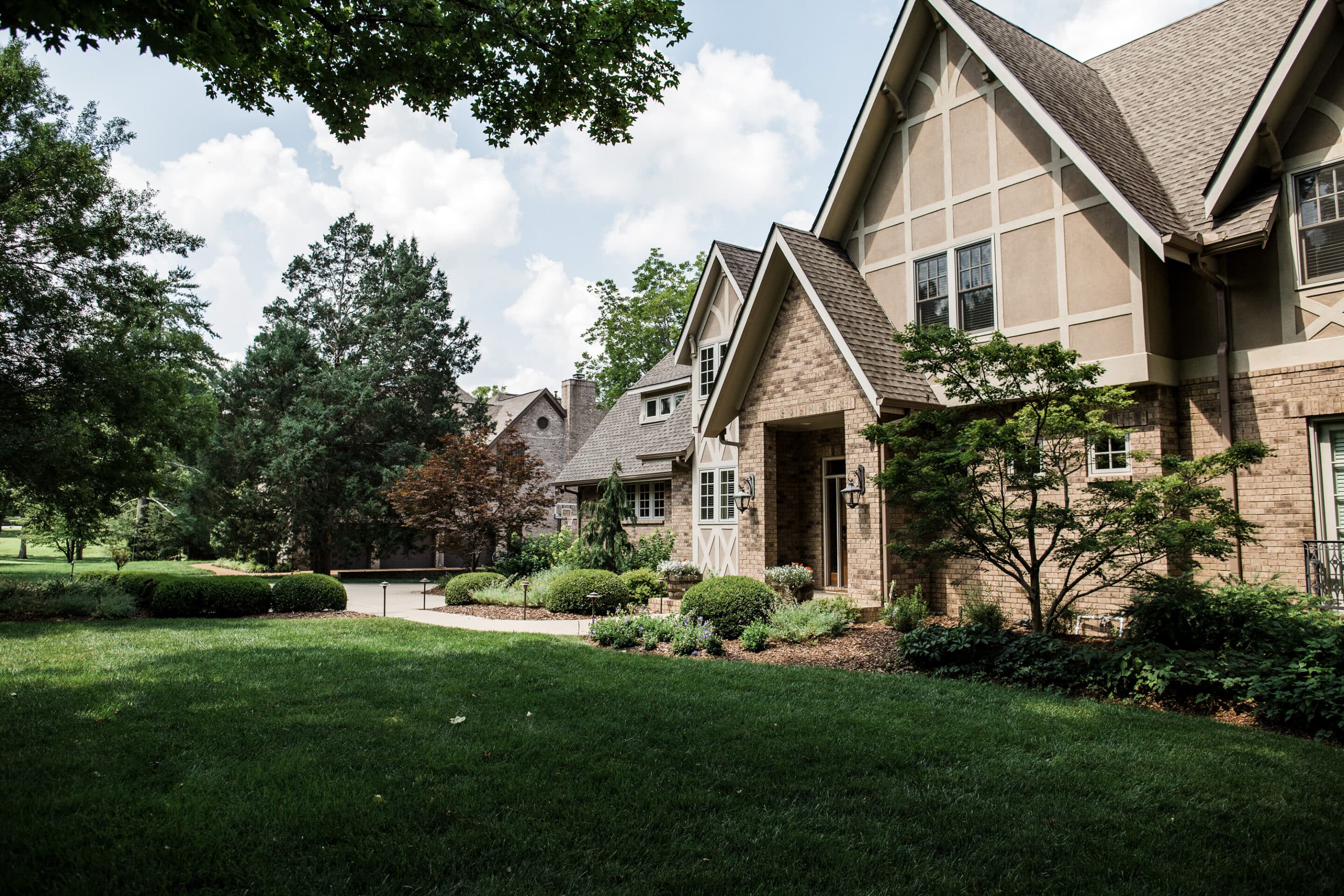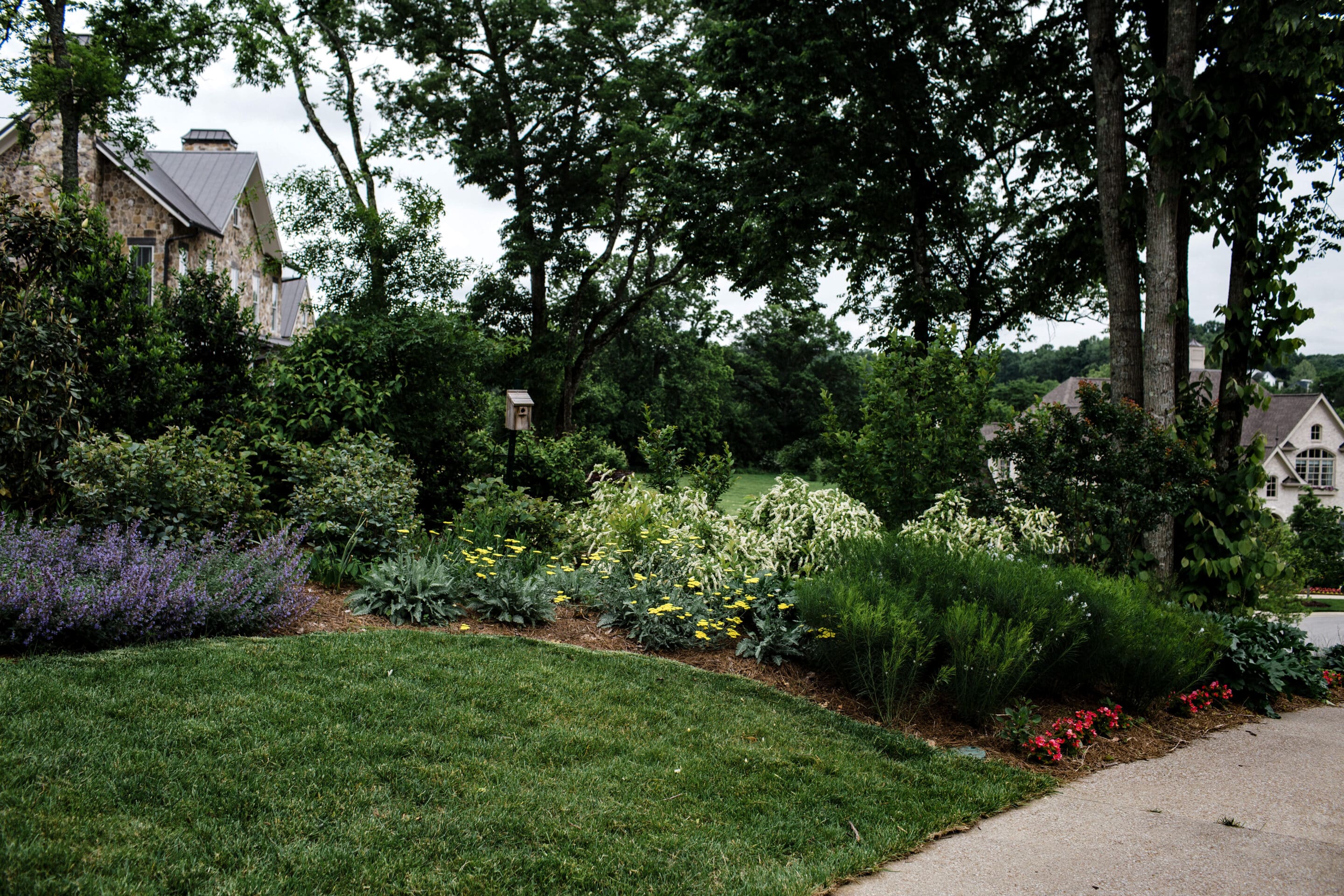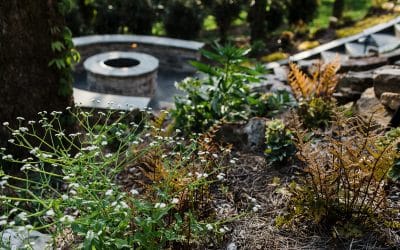Aeration and overseeding go hand-in-hand – schedule time with one of our representatives or keep on reading to learn more!
Fall is an enchanting time in Tennessee. As the temperatures start to cool and the leaves transform into a kaleidoscope of colors, it’s also the perfect season to give your lawn some extra love and attention. One of the most beneficial practices you can undertake during this time is aeration and overseeding. Let’s dive into why fall is an ideal season for lawn care in Tennessee.
Why Aeration and Overseeding?
Repair Summer Stress: Tennessee summers can be harsh on lawns, with heat, humidity, and occasional drought taking their toll. Aeration and overseeding help to repair any damage incurred during the summer months, rejuvenating your lawn and preparing it for the cooler seasons ahead.
Promote Strong Root Growth: Aeration loosens compacted soil, allowing air, water, and nutrients to penetrate deep into the root zone. This promotes healthy root growth, making your lawn more resilient to environmental stresses and better able to withstand the challenges of winter.
Fill in Bare Spots: Over time, lawns can develop bare patches due to factors such as foot traffic, disease, or heat stress. Overseeding in the fall fills in these bare spots, thickening the turf and creating a lush, uniform lawn.
Prevent Weeds: By overseeding in the fall, you give your grass a head start over weeds. The dense, healthy turf that results from overseeding competes with weeds, preventing them from taking hold and establishing themselves.
Why Fall?
Optimal Growing Conditions: Fall in Tennessee typically brings cooler temperatures and ample rainfall, creating ideal conditions for grass seed germination and establishment. The soil is still warm from the summer months, promoting rapid root growth, while the cooler air temperatures reduce the risk of heat stress on newly seeded grass.
Less Competition: With the hot summer months behind us, there’s less competition from weeds for resources like water and sunlight. This gives newly seeded grass a better chance to establish itself without being crowded out by weeds.
Extended Growing Season: Unlike spring, where the window for overseeding is limited by rising temperatures, fall offers an extended growing season. This allows newly seeded grass to become well-established before the onset of winter, giving it a better chance of surviving and thriving come spring.
What is Aeration?
Lawn aeration, or core aeration, entails the extraction of small plugs or cores from the lawn’s surface. A mechanical aerator is used which creates perforations in the lawn. Then, you add fertilizer and grass seed. This systematic approach contributes to enriching the soil’s oxygen content, relaxing its structure, and introducing supplementary seeds that will sprout come springtime. Typically, this technique is recommended to combat soil compaction in well-trodden turf areas and to curtail excessive thatch accumulation. Once the aeration process is complete, overseeding takes center stage, augmenting the lushness of thinner lawns. By seeding over the existing grass (paired with proper post-installation watering), your lawn’s vibrancy and verdure will be promptly restored.

What is Overseeding?
Overseeding your lawn refers to the practice of spreading additional grass seed over an existing lawn. This is done to enhance the density, thickness, and overall health of the grass cover. Over time, lawns can become thin or develop bare patches due to factors such as heavy foot traffic, diseases, pests, or environmental stressors. Overseeding helps rejuvenate the lawn by introducing new grass seed into these areas, promoting the growth of fresh, young grass plants. This process could include things like mowing to remove the thatch layer (so dead organic matter doesn’t stop the growth for new grass seeds). It often also includes spreading your desired grass seed using a spreader. There is also maintenance to consider – as the new grass seedlings grow, continue to regularly water, mow, and fertilize.
What are the benefits?
Some benefits of doing an aerate and overseed on your lawn are:
- Improved air exchange between the soil and atmosphere
- Enhanced soil water uptake
- Improved fertilizer uptake and use
- Reduced water runoff and puddling
- Stronger turfgrass roots
- Reduced soil compaction
- Enhanced heat and drought stress tolerance
- Improved resiliency and cushioning
- Enhanced thatch breakdown
Be sure to keep in mind the timing of any other lawn care activities you may be planning. It’s also a good idea to observe the condition of your lawn and monitor the weather forecast. And don’t forget – selecting the right type of grass seed for your region and lawn conditions is crucial for successful overseeding!
In conclusion, aeration and overseeding are vital for achieving a lush lawn. In Tennessee, fall is the perfect time to aerate and overseed your lawn, setting the stage for a healthy, vibrant lawn come spring. By taking advantage of the optimal growing conditions and reduced weed competition, you can rejuvenate your lawn and ensure it thrives year-round.
Interested in having Gardens of Babylon help you with the look of your lawn? Check out our page on aeration & overseeding, or book a consultation here.









This post clarifies that aeration and overseeding are the keys to success. Can’t wait to give it a shot and transform my patchy lawn into a green paradise